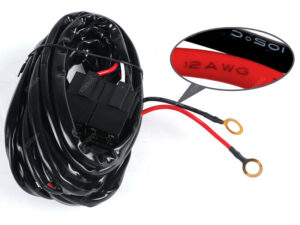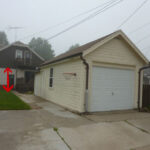Choosing the right wire gauge for your car is one of the most important decisions you'll make for any electrical project. The wrong wire can lead to poor performance, blown fuses, or even a fire. So, how do you know what size to use?

Automotive Wire Gauge
This guide will break down everything you need to know about automotive wire gauge, helping you pick the perfect wire for everything from a simple light to a powerful audio amplifier.
What is Automotive Wire Gauge?
In simple terms, wire gauge is a standard measurement of a wire's diameter. In the automotive world, we use the American Wire Gauge (AWG) system.
The most important thing to remember about AWG is this: The smaller the gauge number, the thicker the wire. This means a 4-gauge wire is much thicker than an 18-gauge wire.
A thicker wire has less electrical resistance, which allows it to handle more current without overheating. This is a critical concept for preventing electrical failures.
Choosing the Right Gauge: The Ampacity Rule
The primary factor in choosing a wire gauge is ampacity—the maximum amount of current (measured in amps) a wire can safely carry. To find the right gauge, you need to know two things:
- The current draw (amperage) of your component. Most devices will list their amperage draw in the manual or on the product itself.
- The length of the wire run. A longer wire run will have more resistance and may require a thicker gauge to prevent voltage drop.
Here is a quick reference guide for common wire gauges and their typical uses in a car:
Note: Ampacity ratings can vary based on insulation type, wire quality, and ambient temperature.
Practical Tips for Selecting Your Wire
- For Power Wires: When connecting a high-current component like an amplifier or winch, always check the device's manual for the recommended wire gauge. This is especially important to prevent overheating and potential fires.
- For Ground Wires: Your automotive ground wire should always be the same gauge as the power wire. A poor ground connection can cause a wide range of electrical problems.
- Don't Guess: Never use a wire that is too thin. If you're unsure, it's always safer to use a heavier gauge than what you think you need. A thicker wire can handle the load of a thinner one, but not the other way around.
- Consider the Run: For long wire runs (over 20 feet), it's often a good idea to go up one gauge to account for voltage drop.
- Check Standards: Look for wires that meet quality standards like SAE J1128 or ISO 6722. These standards ensure the wire's insulation and conductor are built for the harsh automotive environment.
Choosing the correct wire gauge is an essential step in any car modification or repair. By following these guidelines, you can ensure your project is safe, reliable, and performs at its best.





